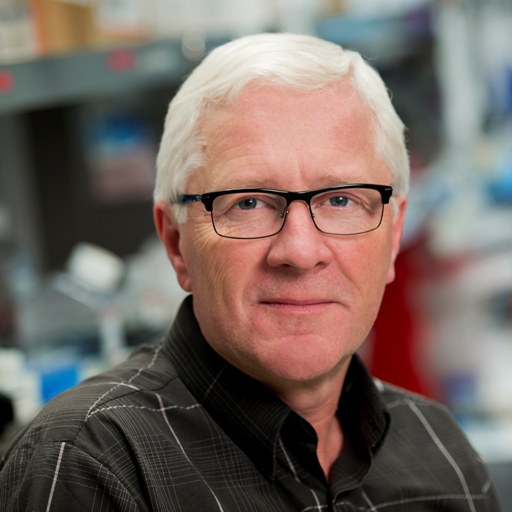
For decades scientists and physicians have wondered what causes some people with cancer to relapse after an apparently successful course of treatment. Now a team of Canadian cancer researchers has discovered the answer to this age-old question, showing that rare and therapy-resistant leukemia stem cells are already present at diagnosis – well before any treatment has begun - in patients who experience relapses of acute myeloid leukemia (AML).
The team, led by TFRI-funded Dr. John Dick (a senior scientist at Princess Margaret Cancer Centre), recently had their findings published in Nature (June 2017). There are two distinct cancer stem cell populations that can lead to relapse in AML, the paper suggests, rare therapy-resistant cells present at diagnosis that have the ability to regrow the disease in patients. AML is the deadliest form of leukemia, with cure rates significantly lower than some other forms of the disease.
The team used an innovative, two-part approach for the study. Paired patient samples of blood taken at the initial clinic visit before treatment as well as after treatment when the disease recurred were analyzed to see what similarities and differences existed between samples. Detailed genetic studies were undertaken, and whole genome sequencing was used to examine every part of the DNA at diagnosis and at relapse to see in which cells genetic changes were occurring.
Most people diagnosed with AML have 10 mutations in their leukemia cells, while some normal stem cells have up to three different mutations. Researchers in the present study were able to determine which mutations were only seen at relapse, using the team’s pre-existing knowledge of leukemic and normal stem cells to discover two cells types that can cause relapse.
This finding builds onto a paper the team published in Nature in December 2016, which discovered a 17-gene signature derived from leukemia stem cells to predict at diagnosis which AML patients will respond to standard treatment and which will not. These new biomarkers have the potential to lead to clinical trials for targeted types of chemotherapy, compared to the one size fits all treatment AML patients currently receive.
Study: Tracing the origins of relapse in acute myeloid leukemia to stem cells
Authors: Liran I. Shlush, Amanda Mitchell1, Lawrence Heisler, Sagi Abelson, Stanley W. K. Ng, Aaron Trotman-Grant, Jessie J. F. Medeiros, Abilasha Rao-Bhatia, Ivana Jaciw-Zurakowsky, Rene Marke, Jessica L. McLeod, Monica Doedens, Gary Bader, Veronique Voisin, ChangJiang Xu, John D. McPherson, Thomas J. Hudson, Jean C. Y. Wang, Mark D. Minden & John E. Dick.
Funding: This work was supported by grants from the Ontario Institute for Cancer Research with funds from the Province of Ontario, the Cancer Stem Cell Consortium with funding from the Government of Canada through Genome Canada and the Ontario Genomics Institute (OGI-047), and the Canadian Institutes of Health Research (CSC-105367), the Canadian Cancer Society, The Terry Fox Foundation, a Canada Research Chair to J.E.D. L.I.S. was funded by the Benjamin Pearl Fellowship from the McEwen Centre for Regenerative Medicine and an American Society of Hematology Scholar Award. This research was funded in part by the Ontario Ministry of Health and Long-Term Care, whose views are not expressed here.
TFRI LINKS, Summer 2017